You won’t find pain au chocolat in France’s fourth-largest city, Toulouse. Here, 100 kilometres from Spain, in France’s southwest Occitanie region, there’s chocolatine. I learned how to order this much-loved chocolate-filled pastry at the Victor Hugo market, as well as violettes cristallisées, saucisse sèche (dried saucisse de Toulouse), and négrette wine.
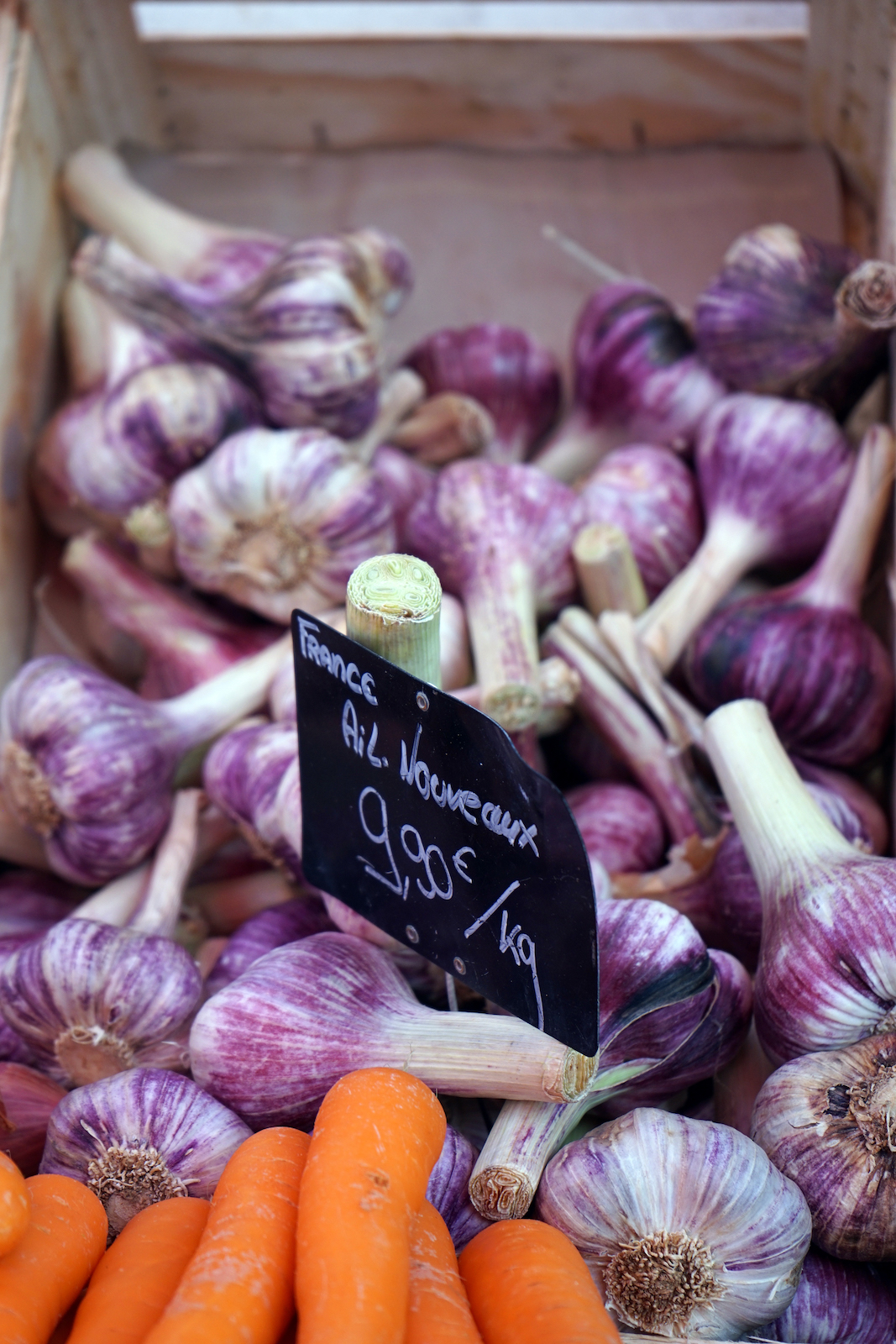
Ambrosial and colourful, Toulouse is known as La Ville Rose, or the Pink City—there’s even a pink garlic grown here. Its rosy buildings, made of the region’s signature red-clay bricks, flank the Garonne River and span it in the form of the gorgeous medieval Pont Neuf (King Louis XIV himself crossed the bridge in 1659). Narrow streets twist and turn in a labyrinthine network; I doubled back to where I started more than once when meandering away from the main square, Place du Capitole.
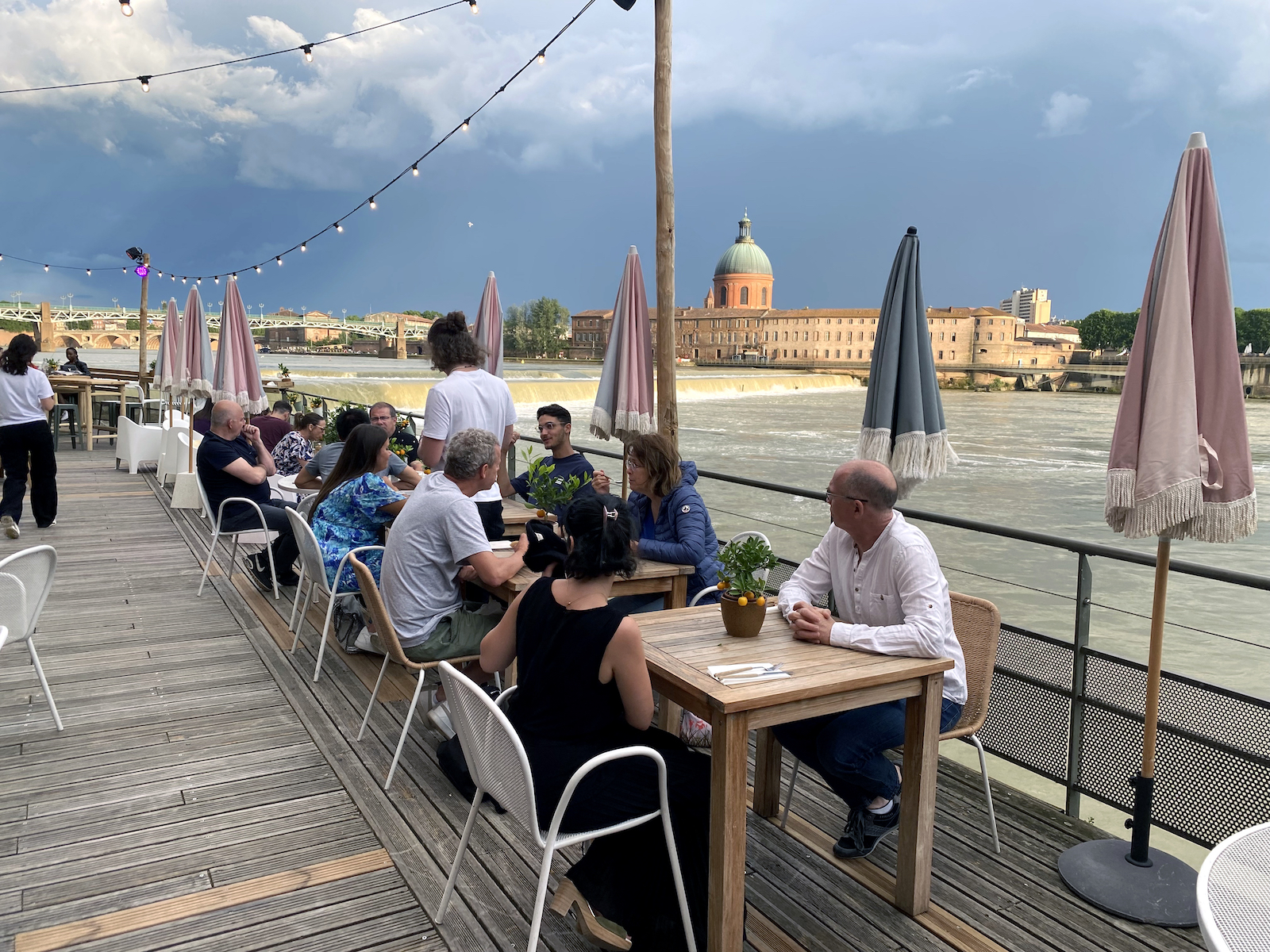
The city’s vibrant guinguette scene has a buzz à la joie de vivre Toulousaine.
Amid this ancient architecture is an exuberance: Toulouse may be France’s fourth-largest city, but it has the country’s second-largest student population, after Paris. That young crowd means the food is approachable as well as haute (still, there are nine Michelin-starred restaurants in and around Toulouse). On a warm evening, the banks of the Garonne are dotted with people lounging and picnicking, and the city’s vibrant guinguette scene has a buzz à la joie de vivre Toulousaine. These informal open-air eateries are gathering spots infused with the local indie spirit.
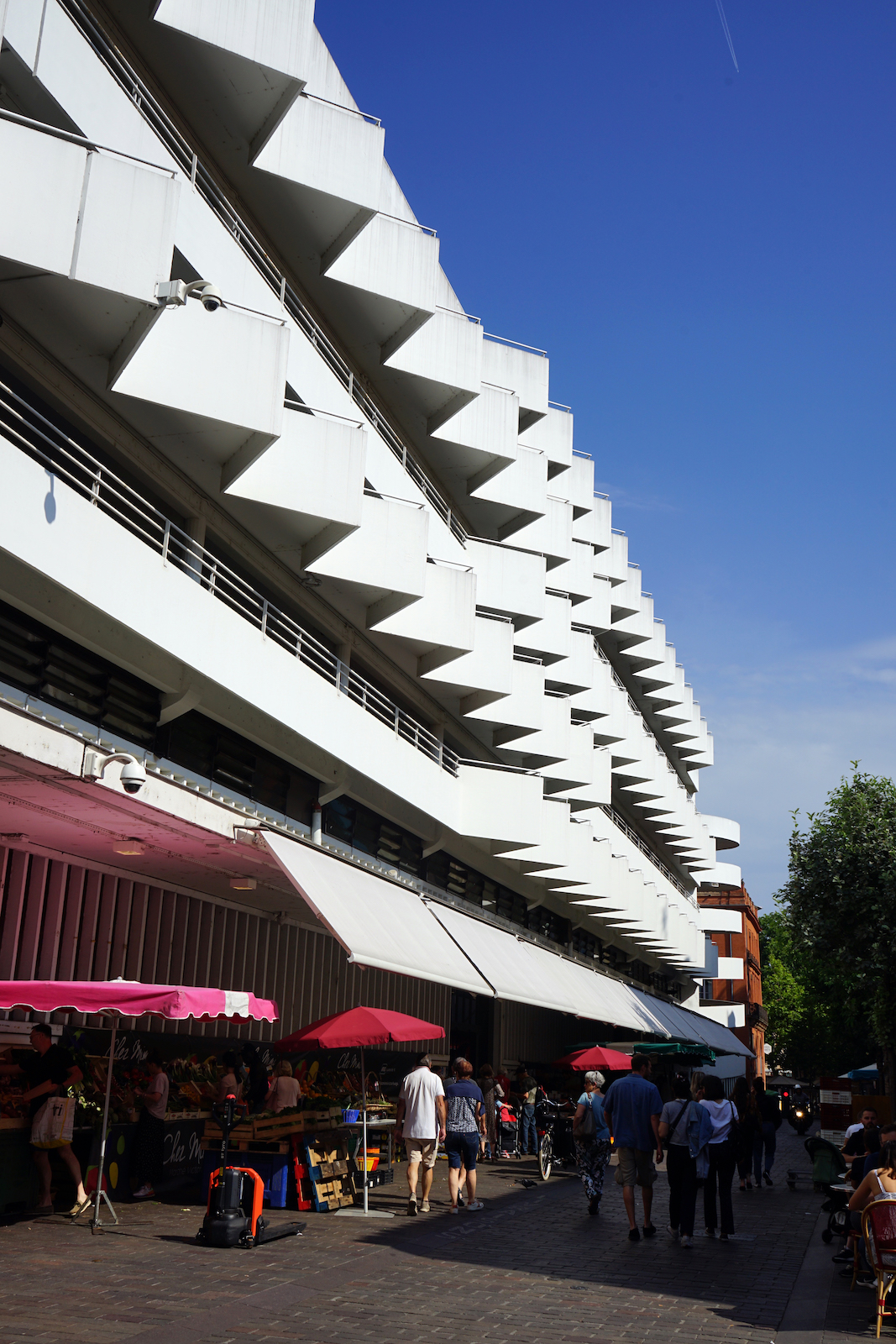
Marché Victor Hugo was renamed in honour of the iconic French author in 1886
It’s a vibe that’s also found back at Toulouse’s largest food market, where the ground floor is filled with local merchants and the second with lively restaurants. A market square since 1827, it was renamed Marché Victor Hugo in honour of the iconic French author in 1886. In 1959, it was reimagined as a mid-century-modern market and car park—and somehow this combination of classic French form and functionality works (much like a guinguette set in a hydroelectric plant). The market’s bright-white angular and curvilinear design is a stark contrast to the otherwise blush-tone buildings, making it stand out as the humming hub of la Ville Rose.
I arrive at Marché Victor Hugo on a weekday morning (although Saturdays are the time to go, when it’s brimming with Toulousaines), and there’s already a group of locals gathered outside around one of the communal tables, sipping coffee, beer, and wine. They smile, raise a glass in a good-morning greeting, and pose for a photo. It’s a welcoming start to my gastronomic journey with Jessica Hammer, an American expat who’s now a Toulousaine herself and the founder of Taste of Toulouse food tours.
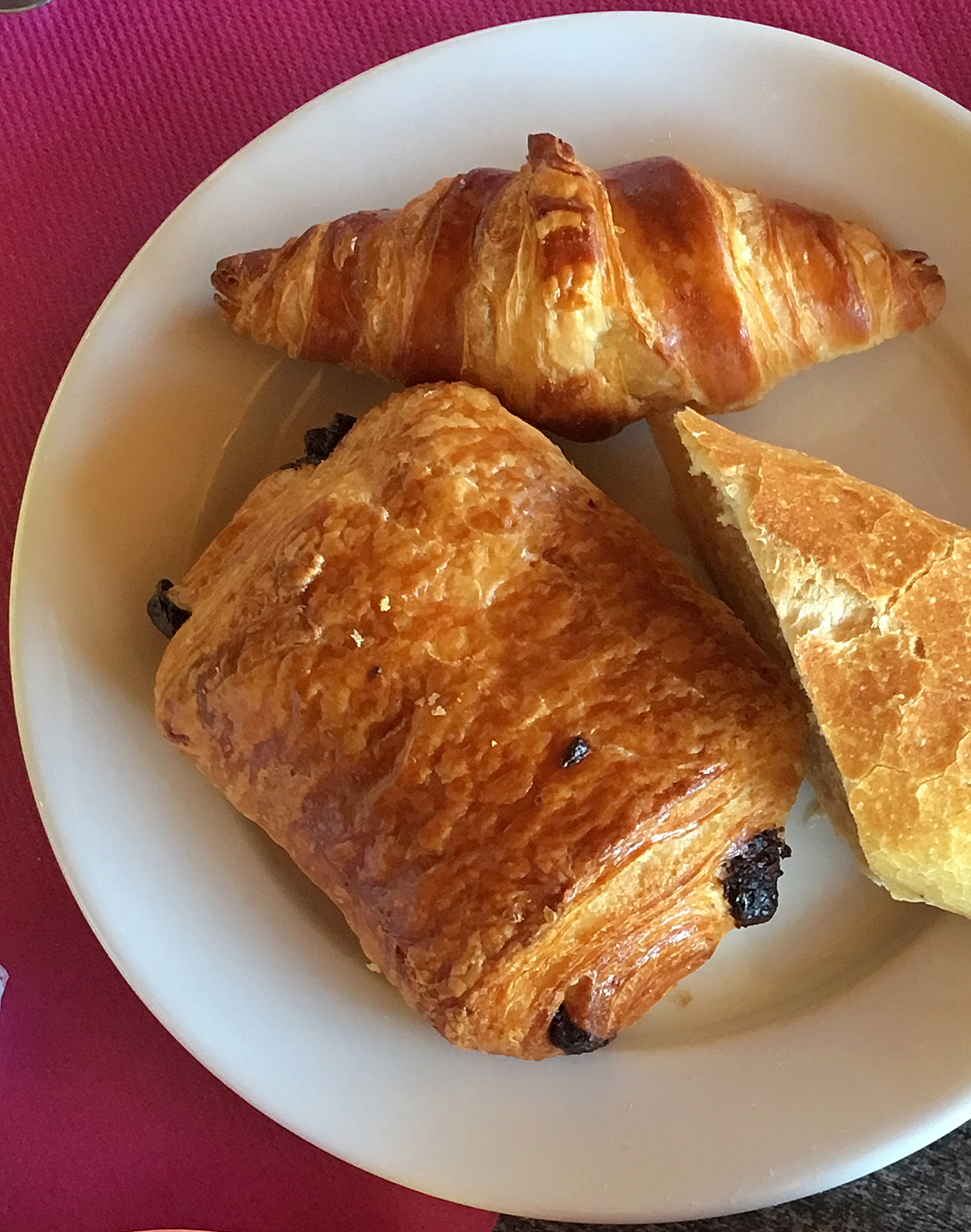
We get a chocolatine and a baguette from an award-winning boulanger and go back outside, alongside the imbibing locals. The baguette, now UNESCO-designated for its “intangible cultural heritage,” is made by a baker with the title of Meilleur Ouvrier de France—a prestigious award bestowed upon the best craftspeople in the country. Hammer raps her knuckles on the baguette, explaining that a crusty exterior and soft, airy interior are key. I break the bread apart and taste that intangible heritage. And then again in the chocolatine, both flaky and gooey.
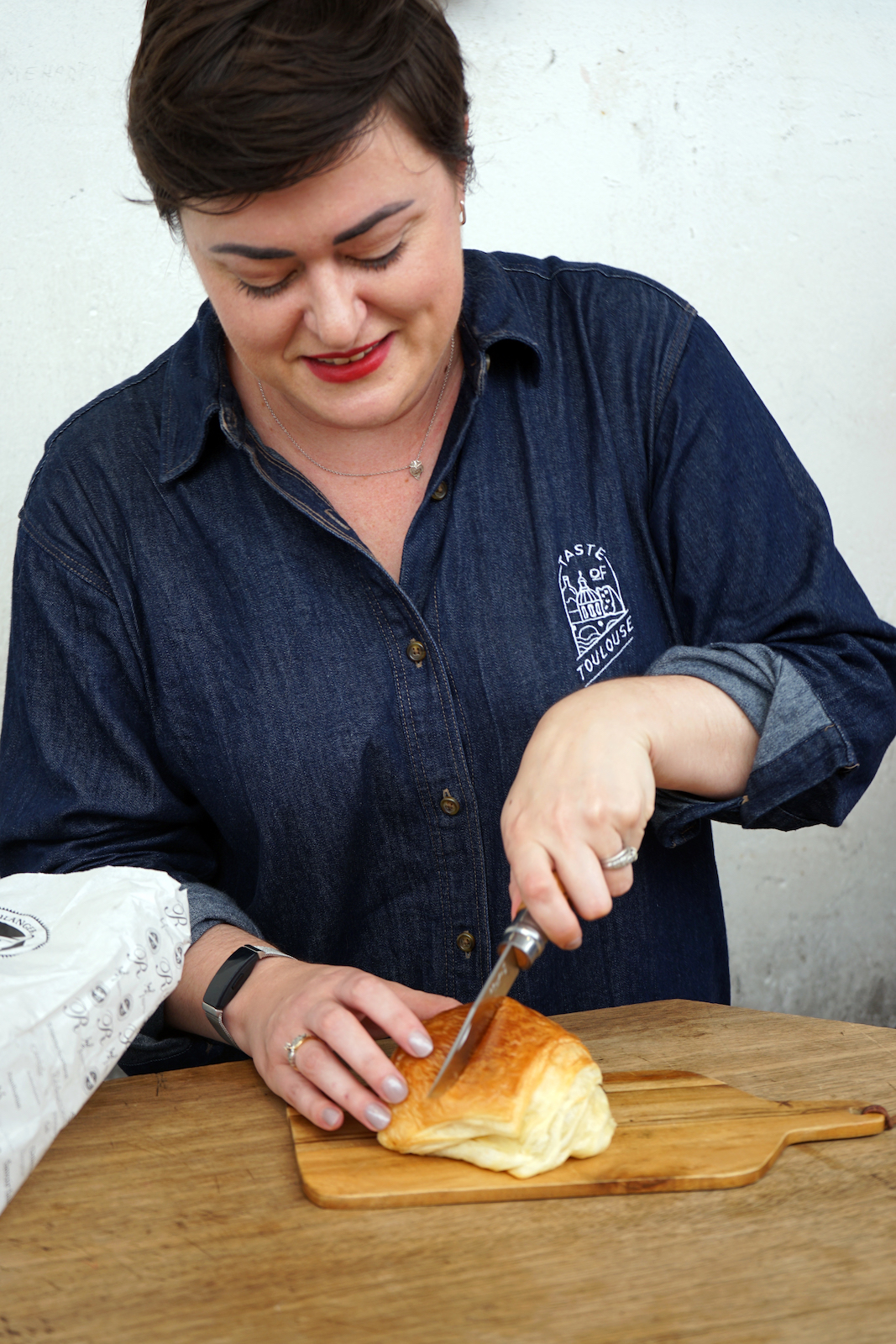
Jessica Hammer cuts into a chocolatine.
The tour continues inside, and I wander in wonder from stall to stall. Hammer points out other regional specialities—from the black truffles of Quercy to the white beans used in cassoulet, haricots Tarbais. Occitanie has more than 240 gastronomic products with a “quality and origin label,” whether an AOC (Appellation d’Origine Contrôlée) wine or those PGI (Protected Geographical Identification) Tarbais beans.
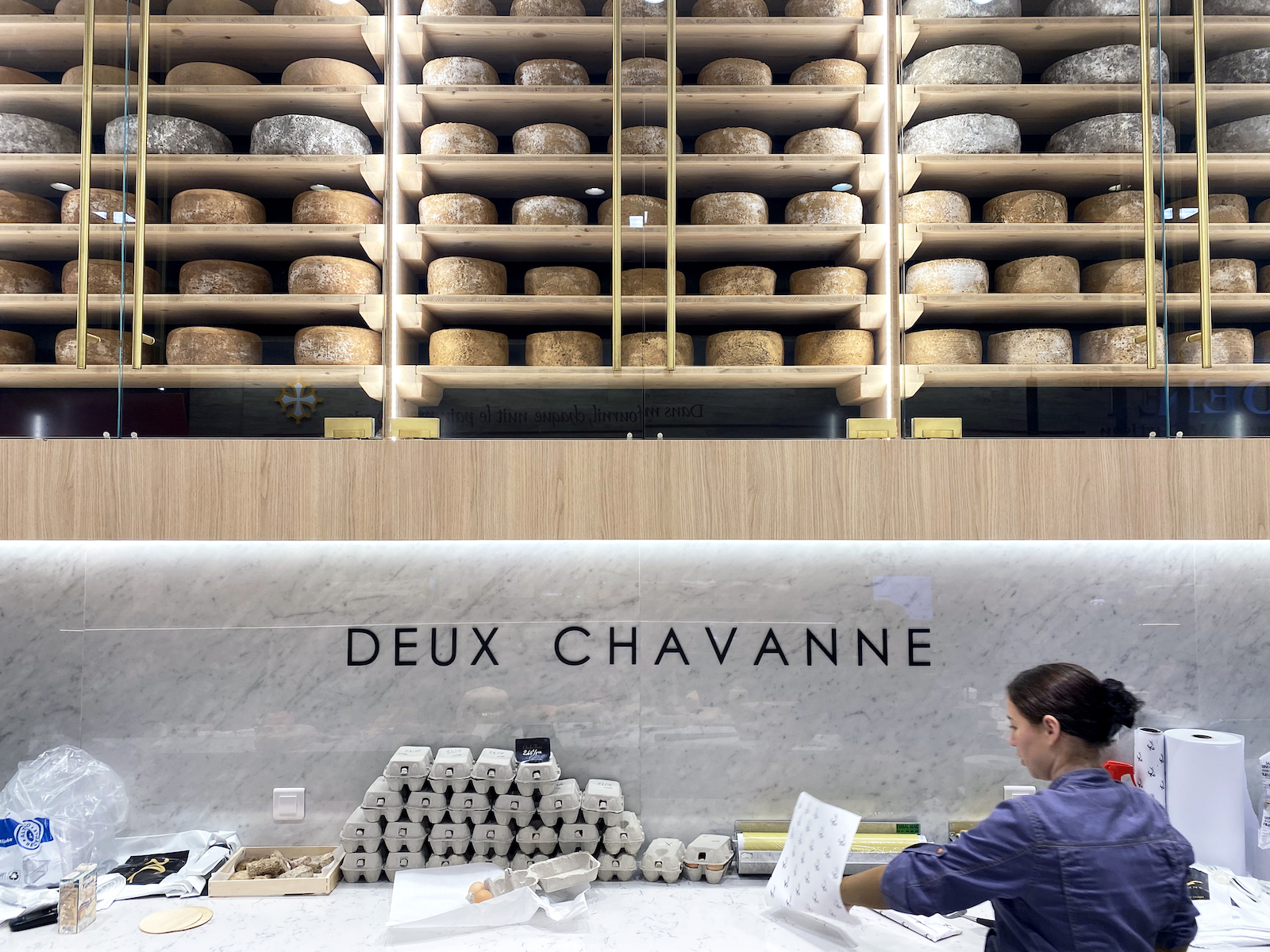
Deux Chavanne cheese shop.
At Deux Chavanne, a fromager and affineur (“maturer” who ages cheese in a cellar), the display of wedges, rounds, and blocks flecked with grass or ash or featuring bright bloomy or briny rinds is a veritable candy shop for cheese lovers. Here, I try brique du Lauragais (raw goat-milk cheese from a town east of Toulouse) and tomme d’Helette (raw sheep-milk cheese from Béarn, just southwest in the Pyrénées). At another cheese shop, Xavier, mere steps from the market, there’s a distinctly local creation from yet another Meilleur Ouvrier de France: the Pavé Toulousain, a cube-shaped raw cow-milk cheese that evokes the pink bricks of Toulouse.

And then there’s the wine. At the wine bar in Victor Hugo market, I sip a Gaillac AOC sparkling white (mauzac) and a Fronton AOC red (négrette) paired with cheeses (bien sûr!) and charcuterie. Occitanie has its own AOC (Appellation d’Origine Contrôlée) wines and lesser-known varietals that are primarily grown in the countryside north of Toulouse en route to Albi (another Occitanie city of medieval and Renaissance beauty, where the 13th-century Bishop’s Palace is now a museum dedicated to Post-Impressionist artist Henri de Toulouse-Lautrec).

Paris-Brest with violettes.
Also growing in the fields surrounding Toulouse are those violets, giving the city another moniker, La Cité des Violettes. The violet is an official emblem and delicacy, crystallized or candied. The flowers have been harvested here since the early 19th century and have become a signature flavour used in the city’s version of the Kir Royale cocktail as well as its decadent take on the choux pastry Paris-Brest, known as the Paris-Toulouse (take that, Paris!).
Toulouse has always had its own character. Ruled by more open-minded counts—instead of the French crown—until the 13th century, the city has long had an independent spirit, even in that chocolatine. Said to have been brought to France from Austria in the 1830s, the laminated pastry is another point of difference for Toulouse. Chocolatine comes from the Occitan word chicolatina (little chocolate) in the lenga d’òc that’s still spoken in southwest France.

Garonne River and Pont Neuf.
But it’s not just about semantics. There’s deep pride in the Occitan culture, and the pastry debate was even brought before the French parliament. A group of high-school students from Montauban—a town just outside Toulouse that also produced a famous French artist, Neoclassical painter Jean-Auguste-Dominique Ingres—sent a letter to the French president asking that chocolatine be included in the dictionary. There’s even a Comité de défense de la chocolatine. The amendment to officially recognize the name was rejected in parliament, but the name prevails in Toulouse. (To add to the mix: In Québec, a chocolatine is also typically the name for the chocolate-filled pastry, while pain au chocolat is the more literal translation of a loaf of bread dotted with chocolate chips.)
So, go southwest from Paris (or bypass the capital entirely and fly to Toulouse from Montréal; Air Canada launched a direct flight last year). Sample the tastes of Occitanie, from violettes cristallisees to cassoulet with saucisse de Toulouse. Sit at a guinguette with a Kir Toulouse or on the riverbanks of the Garonne with a glass of sparkling mauzac and a baguette—“one of our most affordable luxuries,” as Hammer describes it—and a bounty of accoutrements from Marché Victor Hugo. Just remember to ask for a chocolatine, s’il vous plaît.
Read more stories about travel.









